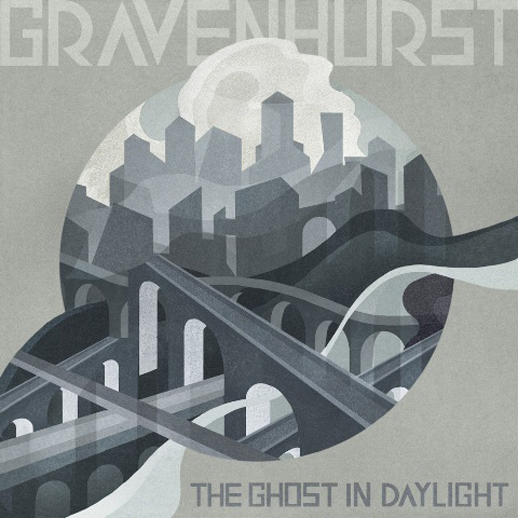
The new album from Gravenhurst. Reviewed by Rob St. John:
The Ghost in Daylight is the latest release by Bristolian Nick Talbot’s Gravenhurst project, expanding a back catalogue that has explored and melded the sonic recesses of fingerpicked folk guitar, psychedelia, shoegaze and ambient drone since the early 2000s. Talbot has spoken of the influence of Brian Eno’s ambient work on this record and the widescreen and subtly shifting sonic landscapes wrapping Talbot’s quiet, personal revelations through The Ghost in Daylight traces a similar set of songlines to King Creosote and (Eno collaborator) Jon Hopkins’ Diamond Mine.
The record’s whorled and knotted aural geographies – teased from mellotrons, optigans (wiki here…in case you were wondering) and antique synthesizers – are akin to those explored, mapped and memorised by Mt Eerie and Alexander Tucker, acting as fog-drenched palimpsests to Talbot’s fluent, flinty classical guitar and frail, somnambulant lyrics. Talbot explains:
‘My sceptical philosophical training doesn’t allow me to believe in ghosts, but they are of enormous poetic value, and they work well as a metaphor for all the emotions and memories that you have failed to deal with and still carry on your back. There is a pseudo-scientific explanation for hauntings that is creatively potent: that an event can be so emotionally powerful and psychologically violent that it imprints itself onto the geography of a place; a kind of psychic time-stamp, and this event continues to play like a looped tape, round and round again, in a parallel world.’
Talbot’s lyrics explore haunted themes, reflecting on memory and obscured histories, laying a trail of cryptic crumbs for the listener to follow and map their own experiences and memories between. Even Talbot’s guitar playing could be said to be haunted, recalling as it does the ghosts of the greats: opener Circadian’s circling melodies could be Bert Jansch or John Renbourn, and the freewheeling hammer-ons and string bends of In Minature recall Richard Thompson in his melodic pomp.
Single ‘The Prize’ is perhaps the most straight-ahead song on the record, a subtle reflection on the difficulties of surviving as a professional musician that builds to a sawing, cawing, string-driven high before a squall of heavily effected guitars clatter together: “as the house lights turn/reveal cigarette burns and the tide line/of last night’s cries of despair/that emanate from the underpass and echo back to anywhere/still the ties that bind us blind us to the emptiness of the prize”.
The highlight of the record is Fitzrovia, and 8 minute ambient exploration of The Fitzrovia Anarchists using Talbot’s recurring lyrical theme of photography to ground a flickering, failing sense of memory and place: “In sepia and monochrome/ Double exposure, stop-motion.”. And this line sums up the record as well as any reviewer could: The Ghost in Daylight is at points bleak, at points racked with fleeting beauty, always whirring through an aural cloud of subtle, creative orchestrations and uncertain, haunted memory.